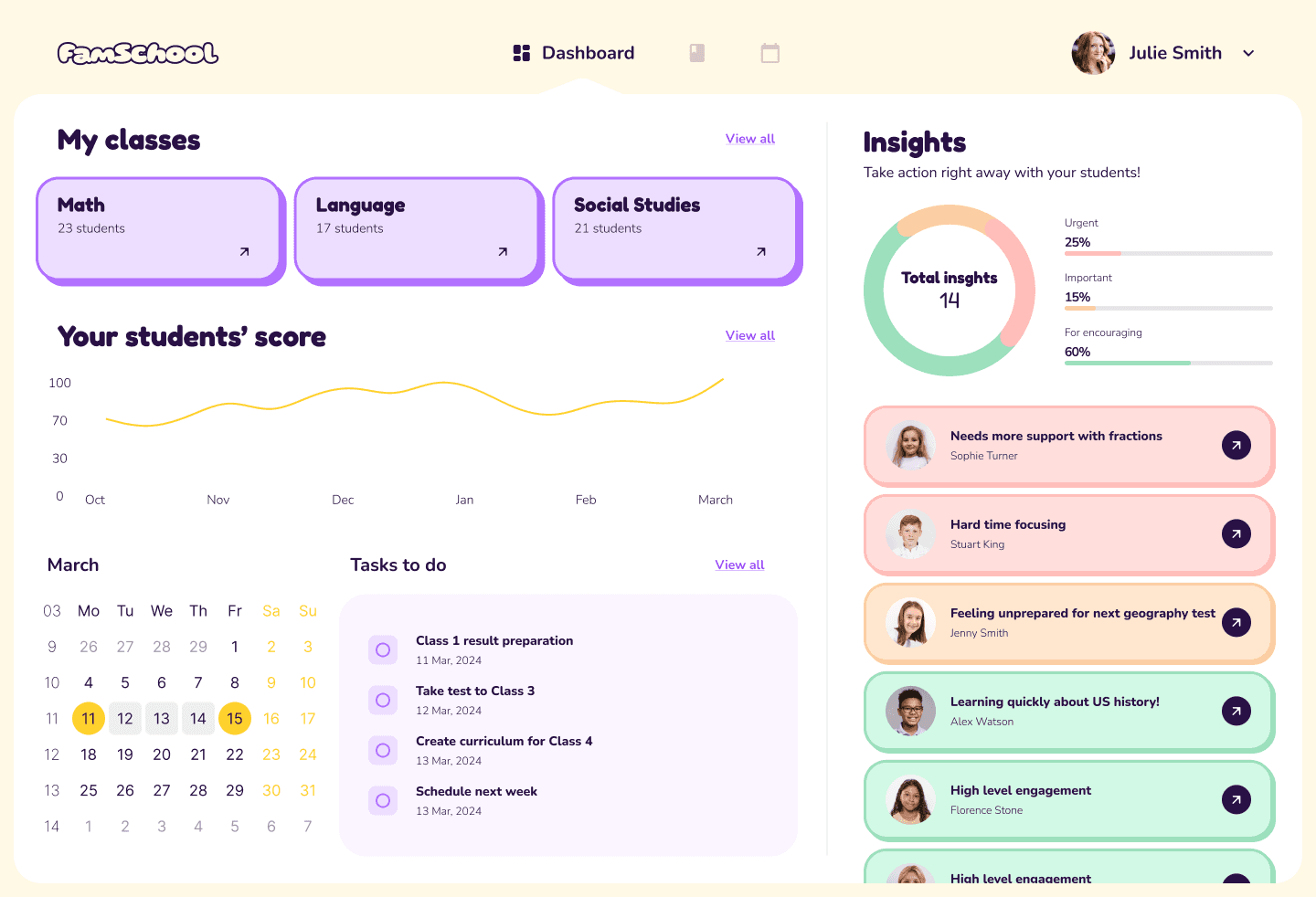The internet is bursting with all sorts of content about the future of AI and even the future of Education as it will be impacted by Artificial Intelligence. One of the best, seminal resources we've come across are the ideas presented by the panelists in a talk at Stanford; AI+Education Summit: Envisioning AI Enriched Classrooms.
In this talk, we were especially moved by the ideas presented by Professor Bryan Brown, a seasoned educator who speaks passionately about the difficulty of being a teacher and the importance of the same for the future of our societies. After our team consumed the entire talk we were inspired to understand the ideas presented by Prof Brown further, here's what we found that we use as a basis of our theory of change.
The Challenges in the Current Education System
Mismatch Between Teaching Methods and Learning Needs: Traditional teaching methods often do not align with the effective practices for learning identified by research, such as the need for active engagement and meaningful participation from students.
Limited Student Participation: The difficulty in ensuring all students actively participate in the learning process, which is compounded by cultural and gender biases that may silence certain voices in the classroom.
Effective Use of Formative Assessments: While formative assessments are recognized for their potential to enhance learning, effectively integrating them into teaching practices and using the insights they provide to inform instruction remains a challenge.
Incorporating Technology Effectively: Despite the potential of technology, especially AI, to transform education, navigating its integration in a way that enriches learning without overwhelming teachers or students is complex.
Addressing Equity and Inclusion: Creating an equitable learning environment where all students have equal opportunities to succeed, regardless of their background or learning style, is a persistent challenge.
Engaging Students with Relevant Content: Ensuring that learning materials and teaching methods are relevant and context-driven, to make learning more meaningful and interesting for students, is often easier said than done.
Balancing Collaborative and Individual Learning: Finding the right balance between encouraging productive group work and supporting individual learning needs and preferences poses a significant challenge.
Overcoming Language and Communication Barriers: The use of complex terminology and the general approach to communication in teaching can intimidate or exclude students, hindering their understanding and engagement.
Cultivating Critical Thinking and Understanding: Moving beyond rote memorization to foster a deeper understanding and critical thinking among students requires innovative teaching strategies that are not always readily adopted or supported by current educational systems.
Utilizing Feedback for Instructional Improvement: Collecting and acting on feedback from formative assessments to improve teaching practices and student learning outcomes is a logistical and pedagogical challenge.
The Opportunities for Improvement Through Modern AI
Personalized Learning: AI can tailor educational content to meet the individual needs and learning paces of students, offering personalized pathways to understanding and mastery. This can help bridge gaps in knowledge and ensure all students receive the support they need.
Enhanced Formative Assessments: AI can automate the creation and analysis of formative assessments, providing immediate, actionable feedback to both students and teachers. This allows for real-time adjustments in teaching strategies and helps identify areas where students struggle.
Facilitating Active Engagement: Through interactive platforms and tools, AI can encourage more active participation from students. It can create dynamic learning environments that stimulate discussion, critical thinking, and collaboration.
Improving Accessibility and Inclusion: AI technologies can offer adaptive learning materials and interfaces that accommodate diverse learning styles and needs, making education more accessible to all students, including those with disabilities.
Data-Driven Insights for Teachers: AI can analyze vast amounts of educational data to offer insights into teaching effectiveness and student learning trends. This information can guide teachers in refining their instructional methods and better targeting their interventions.
Automating Administrative Tasks: By handling routine tasks such as grading and record-keeping, AI can free up teachers' time to focus more on interactive teaching and personalized support for students.
Supporting Collaborative Learning: AI tools can facilitate group projects and discussions by providing platforms for collaboration, managing group dynamics, and offering resources that enrich the collaborative learning experience.
Bridging Language and Communication Gaps: AI-driven language models and translation tools can help overcome barriers posed by complex terminology and language differences, making content more accessible and understandable for all students.
Cultivating Relevant Learning Experiences: Through the use of AI, educational content can be made more relevant and engaging by connecting learning materials to real-world scenarios and students' personal interests.
Building Confidence and Reducing Anxiety: AI can provide a non-judgmental, supportive learning environment that encourages students to explore, make mistakes, and learn at their own pace, which can help build confidence and reduce learning anxiety.
We learn from the words of Prof. Brown as our team thinks deeply about the future of AI-enabled solutions to the core challenges to highly effective educational outcomes, and we hope this summary helps other education innovators as well on our collective mission to support young learners to become happy, successful and valuable members of society.



